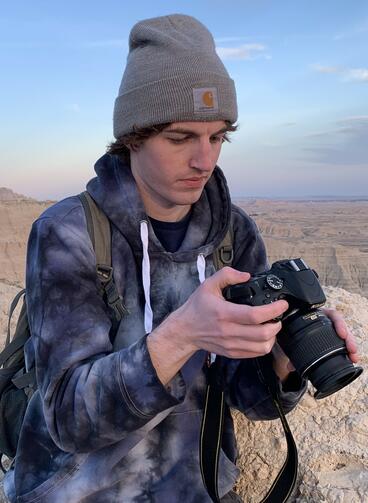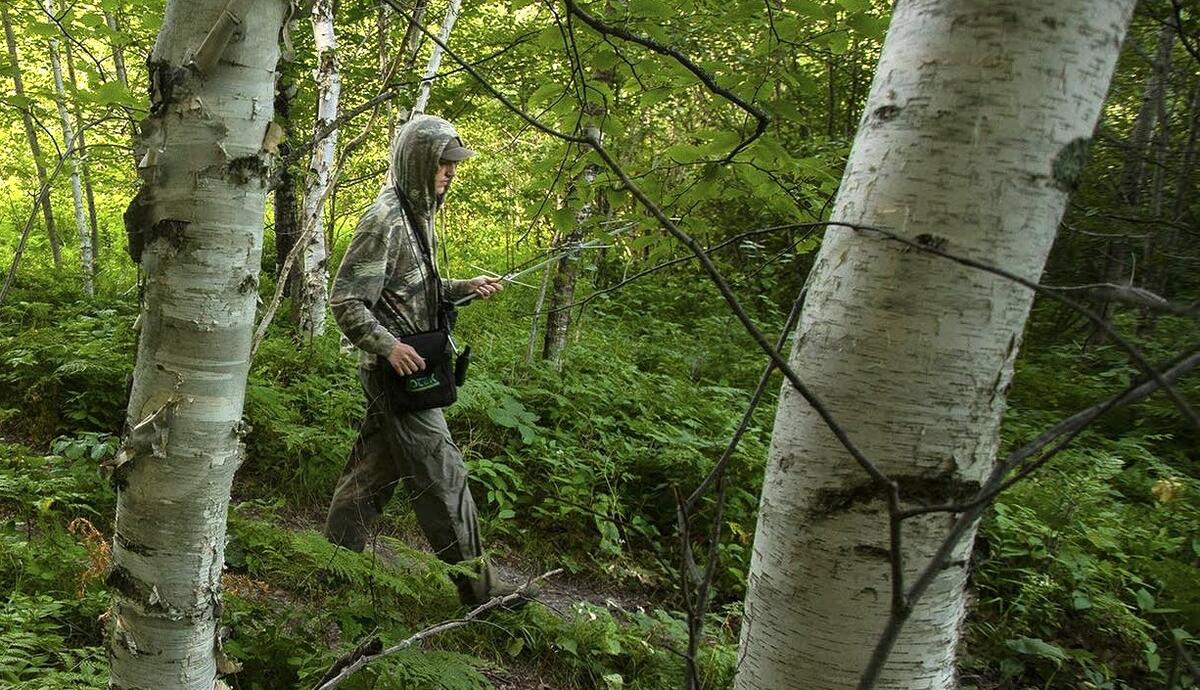When you’re a scientist, the motto is: The more long-term the data, the better. And Reid Siebers, an ecologist in NRRI’s Avian Ecology Lab, proudly helped celebrate the lab’s 30th year of data collection on breeding birds in Minnesota’s National Forests.
“This unique long-term dataset is used to monitor species population changes over time and identify what habitats they use,” said Siebers. “It’s crucial information for informing conservation initiatives and developing adaptive management strategies.”

He dedicates much of his work time to this National Forest Breeding Bird Monitoring Program. The avian research team analyzes the trends to gain valuable insights into the impacts of forest management practices on breeding birds.
“Changes in forest bird communities serve as indicators of local forest and ecosystem health,” he added. “Supporting and maintaining diverse wildlife communities is vital to preserving the structure and function of forests as a whole.”
Joining the Team
Siebers graduated from UMD in 2019 with a bachelor’s degree in biology. He started as a seasonal technician working on several point count projects (identifying and noting present bird species) and gained skills in using radio telemetry to track boreal chickadees. He then worked as a field tech with mammal wildlife researchers and then back to the avian team as a Nest Searcher (actual title) for Veery and Golden-winged Warblers.
“I’ve known since I was a kid that I wanted to be involved in wildlife conservation,” said Siebers. “And my love of birds naturally led me toward avian research and the NRRI bird lab. I feel very fortunate to have found such a supportive and dynamic lab right out of college.”
Beyond the Birds
Given the lab name, birds are an obvious focus for research. But the studies emphasize the functionality of entire ecosystems and that takes broad collaboration.
NRRI ‘birders’ often tap the expertise down the hall in entomology (bugs, insects), forestry and water quality. Or partner with external agencies such as the Department of Natural Resources and the National Forests to align research with broader conservation goals and management practices.
So, even though they get to spend time outdoors with binoculars, they spend an equal amount of time working with agency partners, “suggesting or collaborating on forest management practices, especially about species of conservation concern,” added Siebers. “This communication role is important so our research can be implemented in the real world.”
And when the busy field season is underway, Siebers and the rest of his crew lean heavily on the support of NRRI’s front desk team who keep satellite communicators going and coordinate vehicle logistics. “They help our sometimes chaotic summer work go smoothly,” Siebers added.
Off Hours
Not mentioned above, Siebers added a minor in photography to his bachelor’s degree in biology at UMD. He even had his photos and cyanotypes showcased at a few locations in Duluth. This hobby has been a good pairing with the outdoors environment he works in now.
“I love capturing photos when I can, especially while traveling and exploring new places – both of which I get to do a lot of while at work!” said Siebers.
